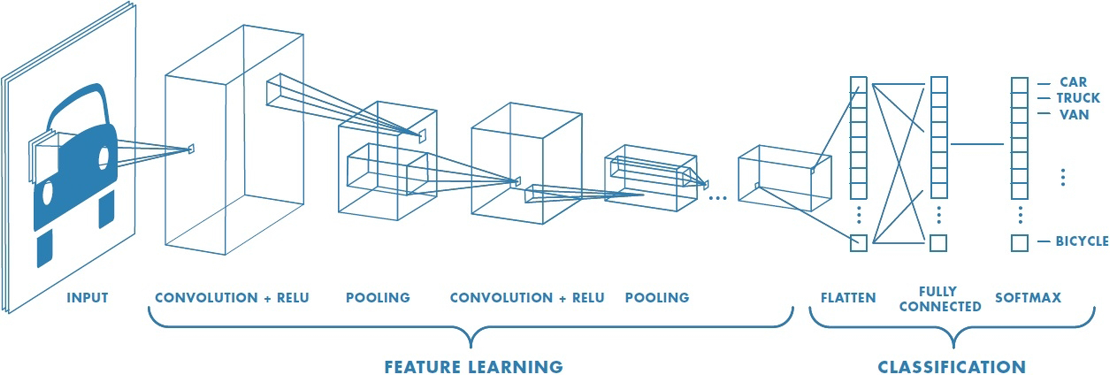Bachelor Assignment
Learning to understand Deep Learning: Convolutional Neural Networks with predefined fixed layers
Type: Bachelor EE
Duration: April 2018 until Juli 2018
Student: Kyrloglou, A. (Alex, Student B-EE)
Supervisors:
Introduction:
Biometrics is about recognising persons based on their physical properties, behaviour or traces they leave. Examples of biometric modalities are face, fingerprint, iris, voice etc. Recently, Deep Learning with Convolutional Neural Networks have resulted in significant performance improvements in e.g. face recognition. The deep learning networks consist of many layers with many parameters that are trained using large numbers of training images. Although deep learning meant a boost in biometric recognition performance, it has not lead to deeper understanding of biometric recognition processes, because it is very hard to interpret the resulting recognition system. So deep learning does not mean deep understanding.

Figure 1: Convolutional Neural Network
Assignment:
When observing the first convolutional filters that result from the training process, it seems like many of them are similar to standard dirivative-of-gaussian directional filters. A key component seems to be the max pool layers that pick in small neighbourhoods the maximum values of the filters and reduce the resolution. These max pool layers may make the system robust against small displacements of the faces. In this assignment, we try to gain understanding of the operation of deep learning networks, by adopting a simple structure with predefined filters, combined with max pool layers and a final standard classier layer and compare the operation to that of "normal" Convolutional Networks and "normal" classifiers.



